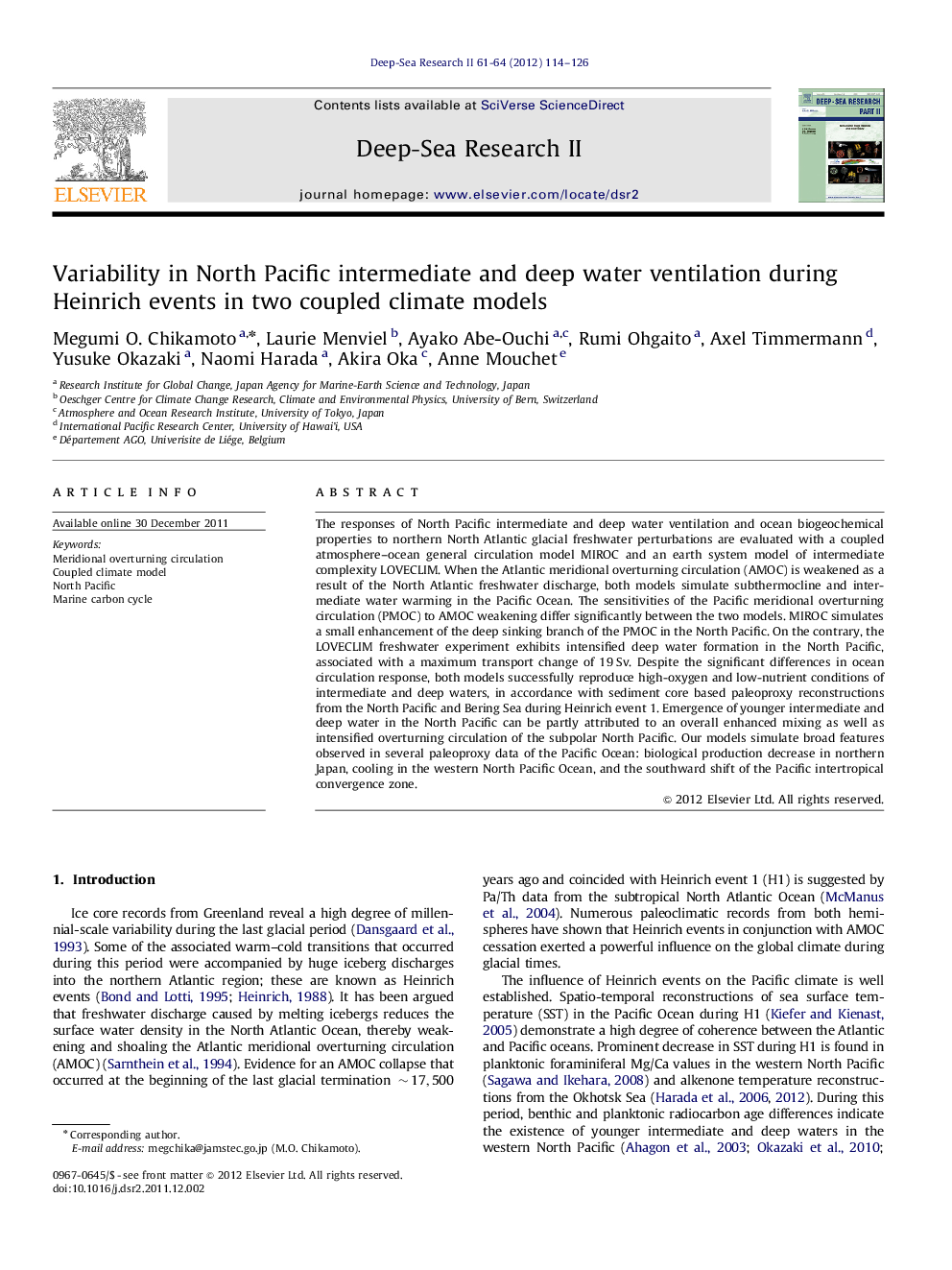| Article ID | Journal | Published Year | Pages | File Type |
|---|---|---|---|---|
| 4536772 | Deep Sea Research Part II: Topical Studies in Oceanography | 2012 | 13 Pages |
The responses of North Pacific intermediate and deep water ventilation and ocean biogeochemical properties to northern North Atlantic glacial freshwater perturbations are evaluated with a coupled atmosphere–ocean general circulation model MIROC and an earth system model of intermediate complexity LOVECLIM. When the Atlantic meridional overturning circulation (AMOC) is weakened as a result of the North Atlantic freshwater discharge, both models simulate subthermocline and intermediate water warming in the Pacific Ocean. The sensitivities of the Pacific meridional overturning circulation (PMOC) to AMOC weakening differ significantly between the two models. MIROC simulates a small enhancement of the deep sinking branch of the PMOC in the North Pacific. On the contrary, the LOVECLIM freshwater experiment exhibits intensified deep water formation in the North Pacific, associated with a maximum transport change of 19 Sv. Despite the significant differences in ocean circulation response, both models successfully reproduce high-oxygen and low-nutrient conditions of intermediate and deep waters, in accordance with sediment core based paleoproxy reconstructions from the North Pacific and Bering Sea during Heinrich event 1. Emergence of younger intermediate and deep water in the North Pacific can be partly attributed to an overall enhanced mixing as well as intensified overturning circulation of the subpolar North Pacific. Our models simulate broad features observed in several paleoproxy data of the Pacific Ocean: biological production decrease in northern Japan, cooling in the western North Pacific Ocean, and the southward shift of the Pacific intertropical convergence zone.
